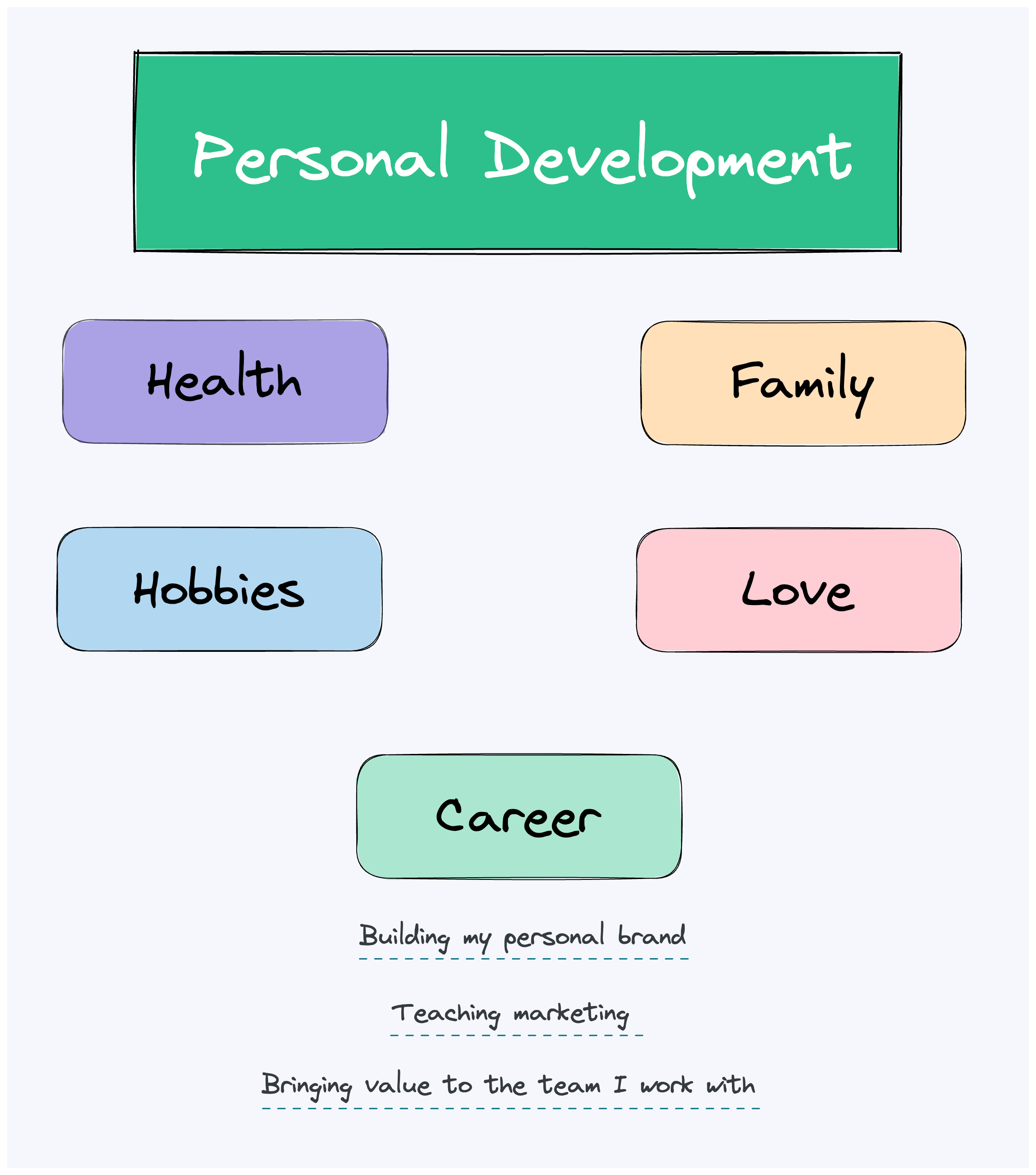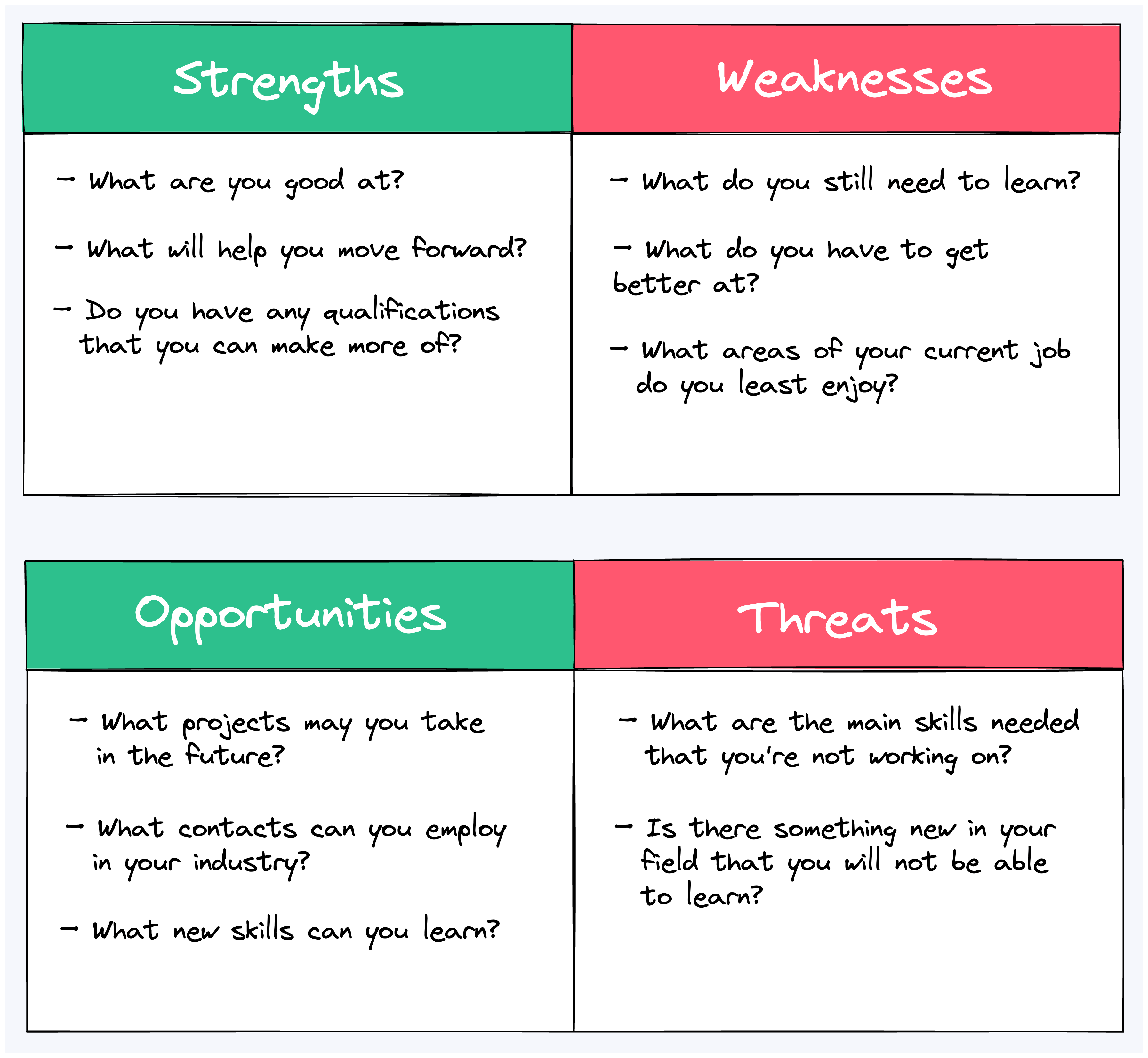We tend to think about our careers and personal development as one ongoing process – like a river flowing constantly. But if you’re swimming in that river, every so often you need to stop to take a breath. Taking a moment to create a personal development plan is like taking a very deep breath.
I’ve been reminded of this a couple of months ago when I broke my constant work cycle of 10 years. Suddenly, I had no current job and no idea what the next one would be. I was so tired of moving straight on to the next thing without rest. So I decided to take a month off, look around, and actually think hard about the next move. Lo and behold, my personal development plan was born.
Why you need a personal development plan?
Imagine if you asked a contractor to build your new house and they said “we don’t need a plan, we’ll figure it out as we go.” You wouldn’t tolerate that for a second. So why do so many of us go through life that way?
Most of the time we harbor aspirations and dreams, yet we rarely stop and think about our future in detail.
A personal development plan helps you know where you’re headed and how to get there, with specifics.
First, this will bring clarity to your thinking and you’ll know exactly where you want to be. What’s more, it will give you peace of mind that you’re going in the right direction daily.
Efforts will feel more deliberate and decisions will be easier, as you will have a clear benchmark.
Is your resume good enough?
Drop your resume here or choose a file. PDF & DOCX only. Max 2MB file size.
When you look at successful people, you will almost always discover a plan behind their success. It is the foundation for success.
Personal development expert Jim Rohn
I couldn’t agree more.
How to build your personal development plan?
The process of building your plan can take considerable time. This is completely normal and you shouldn’t rush things. However, it’s a good idea to set a deadline in your mind. After all, tasks are a kind of fluid – they take as much space as you give them.
Step 1: Clear out your vision
You have to start with the end in mind. To build your personal development plan, look at what’s on the other side. Think about your future life. Choose a timeframe that makes sense for you – if you are still in your 20s, a look at 3 or 5 years from now is enough. The older you get, the longer the planning period you can have.
Now, imagine your life in, say, 3 years and go through your imaginary day:
- What’s the first thought that passes your mind in the morning?
- What’s the reason you get out of bed?
- How’s your day structured?
- What’s your workplace? What do you do there?
- How much time do you spend with friends and family?
- What makes you feel accomplished at the end of the day?
- What gives you energy moving forward and what drains your energy?
In her book Pivot, author Jenny Blake even suggests you craft a full story – here’s her template for an Ideal Day Mad Lib.
Now take one step back and review. What are the areas that will make you feel successful? This will help you determine your values. Map them out – you can use anything, from a note-taking app to a blank sheet of paper, from a simple bullet list to a fancy visual board. The best way this works for me is by using a mind map with several main nodes for each of the areas in your life.
Some people prefer to keep that simple, with 2-3 nodes for professional, personal and social fields. Others go in more details – the framework blogger Michael Hyatt uses has 10 life domains:
- Intellectual
- Emotional
- Physical
- Spiritual
- Marital
- Parental
- Social
- Financial
- Vocational (career-related and professional)
- Avocational (hobbies and interests)
I believe the map works best with 5-6 categories and you can put there everything you want to – if you feel like travel is a key field for your development, best to have it there.
After you have the key areas as main nodes, complete your mind map by including several sub-nodes that will make the field a success.
The end result will give you a broad sense of what areas you should focus on.
Step 2: Outline your strengths and areas for improvement
You’ve put down a pin on where you want to go – now let’s see what are the means of going forward.
First, think about what you already have going for you – what are the strengths and skills that are already relevant to your dream? Maybe you want to move into a new work field – then your natural networking skills will help you get to know the industry more quicker.
Then, make a list of skills you need to develop and projects you can start working on to move you closer to your goals. Think about the people you can contact and who can help you along the way. At this point you don’t have to be too specific – think of it as a kind of brainstorming. Jenny Blake has a handy template on this, as well.
After you’ve created a long list, look at the different points and group them to form clusters. You can use a format that’s well known by most business students – the SWOT chart. Although we’re used to thinking about it as a tool to assess organizations, it’s just as handy for assessing your personality. You just have to draw a four-quadrant map and use each part for your strengths, weaknesses, opportunities and threats. If this sounds too abstract, check out the questions for building a personal SWOT chart here.
Step 3: Build Your Personal Development Plan
After you have a clear direction, let’s go into detail. The key here is to get down to specific actions for the future.
You start by setting up specific projects. What do you need to get them done?
- What resources will you need? Books to read, courses to take, tools to subscribe to…
- What people will help you do it? Friends, mentors and so on.
- What will success look like? Set specific criteria for measuring that.
- What is the timeframe? Either put in a general deadline or milestones for different parts of the project.
You’ll end up with a clear idea of what needs to get done and how to do it. Now get doing! You can even tie your personal development plan to your annual goals. Read more about setting annual goals here.
Step 4: review and adapt
President Eisenhower once said: “Plans are useless, but planning is indispensable.” The importance of a personal development plan is in getting the clarity that comes with answering questions about your future. But it is not set in stone. After all, life changes fast and we need to change with it. That’s why it’s important to review and adapt.
Reviews can go on a quarterly basis. Make sure you keep your eye on the prize and remind yourself why you’re doing what you’re doing. Reread your vision, check out your values mind map. But after that focus just on what needs to be done over the next quarter – otherwise, you might feel overwhelmed by the full picture and never get around to doing anything.
If some project no longer makes sense, don’t hesitate to remove it from your personal development plan. Don’t hesitate to adapt the plan according to new interests or a change in circumstances. A good personal development strategy grows as you do. As Tony Robbins put it, “Stay committed to your decisions, but stay flexible in your approach.”
To share or not to share?
You don’t have to advertise your new journey to everyone, so don’t rent that billboard in front of work just yet. However, it’s good to validate your personal development plan with several key people. These can be co-workers, family members, close friends. In a best case scenario, they will be diverse enough to cover all of your plan’s areas.
This team of mentors will be able to support you throughout your personal development journey. They will point out ways to achieve your goals, introduce you to new people and resources, or just be there for you when going gets hard. They can also serve as an accountability group – when you’ve shared your goals with others, you feel obliged to see them through.
A conclusion.
Taking a look around and making sure you know what you’re going after is very important and it can be quite refreshing. When I built my personal development plan, I felt energized and ready to conquer every challenge. I was sure I knew what I was doing and that gave me confidence in pursuing my vision.
But if you’d like some more inspiration regarding just where an amazing plan can take you, check out our successful resumes page. There, you can see how more than a dozen real people found their own success. Good luck!
Make one that's truly you.





